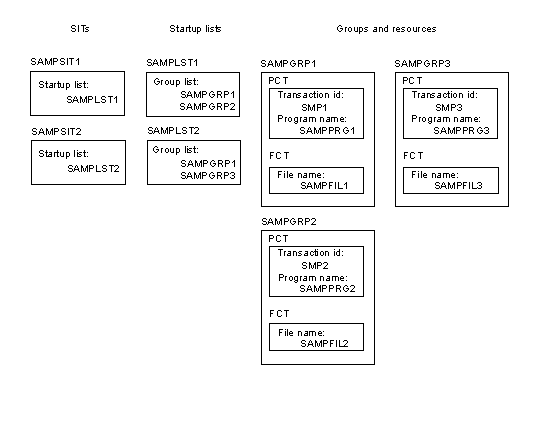The Startup List
The startup list names the resource groups that are to be installed at system initialization. In this way, you can specify which resources are associated with a SIT and therefore which resources are installed when a CICS-enabled enterprise server is started. You can share resources across multiple enterprise servers or you can restrict some resources to a specific enterprise server. No matter what resources are defined in an RDF, a resource is not installed for an enterprise server unless the group that the resource belongs to is specified in the startup list associated with the SIT used to start the enterprise server. (You can, however, use the supplied transaction CINS to install further resource groups once the server is running.)
Assume, for example, that the RDF defines the resources shown below:

Starting an enterprise server with the SIT SAMPSIT1 specified will initialize that enterprise server with the two groups SAMPGRP1 and SAMPGRP2. This is because SAMPSIT1 specifies a startup list SAMPLST1 which has only those two groups listed.
Additional groups can be installed to that enterprise server when it is running, without having to stop the server, by using the supplied transaction CINS.
Assuming you have the authority (sign-on security privilege) to run the transaction, enter:
CINS SAMPGRP3
Then the SAMPLIST3 group is installed and made available to enterprise server users.